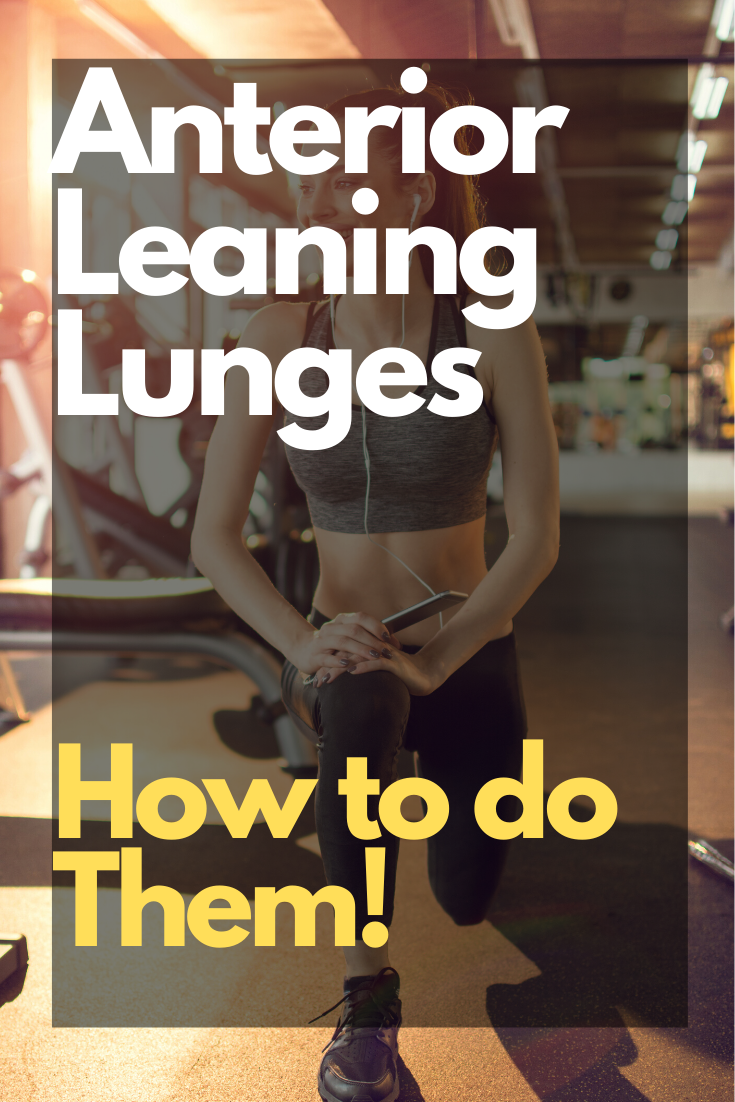An anterior leaning lunge allows you to target your butt and hamstrings. You can perform an anterior leaning lunge with or without weights.
How to Perform an Anterior Leaning Lunge
To perform an anterior leaning lunge you need to:
- Prepare the area in front of you so that you will not bump into anything if you unexpectedly fall forward.
- Pick up your dumbbells, your preferred alternate weights, or your body weight. I prefer not to use weights.
- Stand up straight
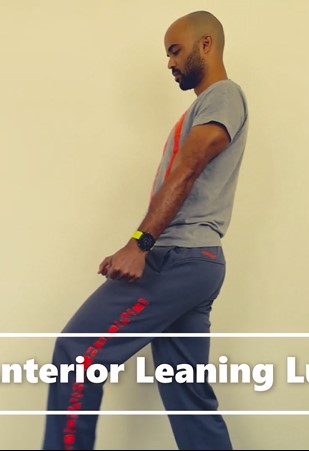
Performing the Lunge
- First, let’s start with extending the left leg – Extend your left leg in front of you so that when you have reached the bottom of your lunge your left knee and ankle are at a 90-degree angle with the floor. (This is different for each person. Try and start at a manageable extension that you are confident you can perform without causing injury.)
- With a standard front lunge, your torso will also remain at a 90-degree angle with the floor. However, with the anterior (head) leaning lunge, you need to lean your head forward over your knee or beyond your knee.
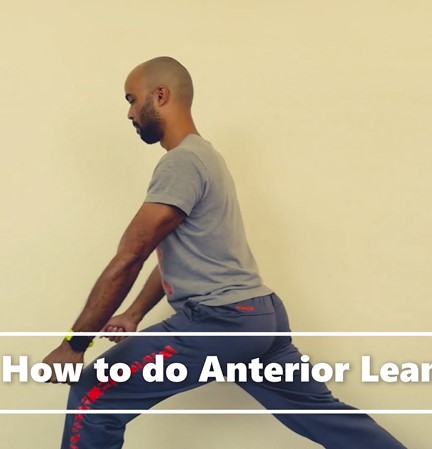
- As you lean forward, keep your back straight and do not curve your spine or allow your arms to control the position of your back.
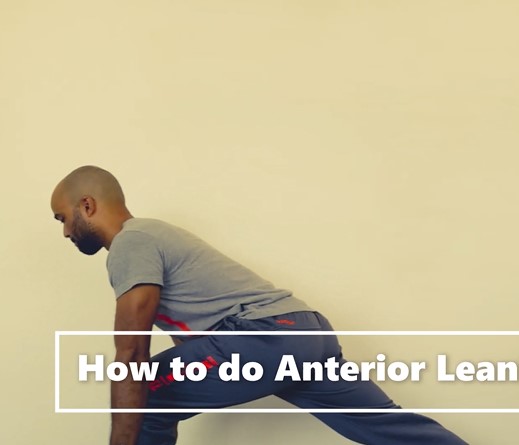
- At this point, when you are at a full extension or the bottom of your lunge, your back will be aligned with your straightened right leg. An offset 180 degree (flat) line should extend from your right heel to the top of your head. Think of a rod extending from your heel to your head. The rod touches every part of your head, back, and legs.
- These lunges are designed to make them stronger and build denser muscle tissue in the gluteus and hamstring areas.
Returning to your Starting Position
- Now, we will return to a neutral position.
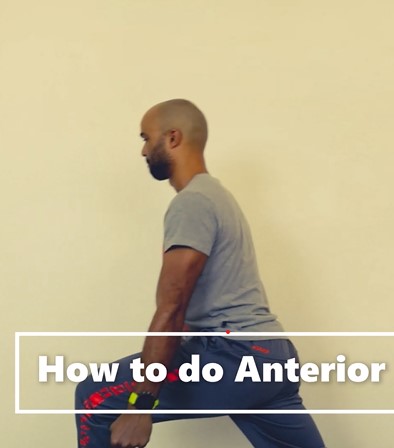
- First, bend your right leg slightly.
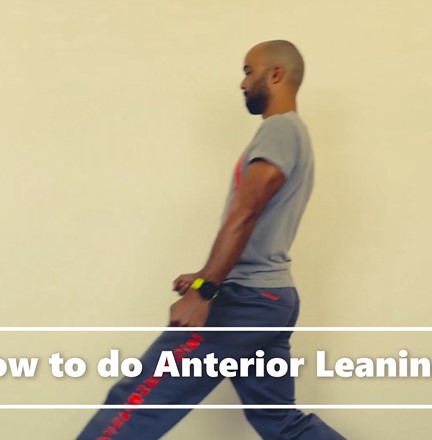
- Next, straighten your left leg. As you do this, your quads will take over more of the workload so that your hamstrings and glutes can take a breather.
- Then, straighten your back to an upright position. Like you are about to land at the airport. It should be 90 degrees with the floor.
- Now, push off with your left leg to pop back into a neutral standing position.
Repeating the Lunge
- Repeat the same steps as many times as your trainer or training program instructs you.
- You can vary the exercise to do one leg after the other. Or you can do a full set on one leg and then switch to the other. I personally like to focus on one leg at a time. Then, I switch to the other leg. That will be a complete set.
What the Anterior Leaning Lunge Targets
An anterior leaning lunge is an exercise that focuses on strengthening the gluteus maximus and minimus while stabilizing the hamstrings.
There are three general types of lunges. The front lunge, the rear lunge, and the side lunge.
All of these lunges target different areas of your upper leg and waist area. The purpose of lunges is to provide a supple upper leg, gluteus, and hip area.
The anterior leaning lunge or (head) leaning lunge is performed to increase targeting of the butt and hamstrings. The positioning of our back aligned with our rear extended leg allows us to hyperextend the butt and hamstring muscles so that they get a deeper pull compared to traditional lunges.
Frankly, the anterior leaning lunge works the booty. It works in concert with lunges, squats, box jumps, and other calisthenics exercises. As with most gym exercises, they originate from athletes trying to strengthen their bodies for their sport.
This exercise will help prevent injuries and allow you to increase muscle strength and mass in your butt and hamstrings. You also will use your back, quads, and hip flexor muscles. But, the focus is on the booty.
Why They are Good for You
They help your muscle fibers in your glutes and upper leg lengthen and contract more efficiently. This helps you jump, run, and walk.
If you have strong gluteus, you will walk more efficiently. The same goes for running and jumping. The anterior leaning lunge gives you a solid foundation without having a leg press machine, heavyweights, or even a gym membership.
As mentioned above, I prefer performing these exercises without weight. But, I believe most people use weights when doing anterior leaning squat so that they can maximize there time getting those muscles used to heavier stress loads. Theoretically, this will allow for more muscle growth.
Lunges are good for you because they strengthen leg muscles for athletes.
How often to do Them
This is a very personal question. As most trainers will tell you, it depends on your goals.
I imagine most of you are reading this article because you enjoy working out, you are recovering from an injury, or you want to get a nice firm booty. All of these are good and valid reasons.
To answer the question of how often you should do them, you need to know a little about sports science. For the average person, muscles fully repair 4 days after exercising. Knowing this helps you make a determination of how much you want to perform anterior leaning lunges.
For the general athlete, you would only need to to them twice a week spaced at least 3 days apart.
Those who want an incredible booty could easily bump this number up to 3 times a week with at least 2 days of separation between exercises. But, remember that getting the booty bigger will require months of continuous and consistent training.
Remember to talk to a nutritionist or doctor to find out what you should eat to maximize your glute building results.
What to Expect when you do Anterior Leaning Lunges
Assuming that we do the exercises correctly, have been doing other exercises to complement muscle building, and have been eating properly results could come in as little as a few weeks. But, don’t expect that. Expect it to take a few months to a full year to see noticeable changes in physical size. The strength and mobility benefits can be seen within a few weeks of regularly performing these exercises.
When I am regularly performing my calisthenic exercises, I notice the difference within one week of training. The biggest difference for me is injury prevention.
When I do lunges and box jumps regularly I don’t get as sore or experience tendon issues. I am a triathlete. Managing three endurance sports can be challenging on all of my muscles and joints. But, exercises like anterior leaning lunges keep the body ready for the next challenge.
The anterior leaning lunge is a perfect exercise to strengthen the upper legs and glutes.
Please let me know how it goes. Have an awesome day!

